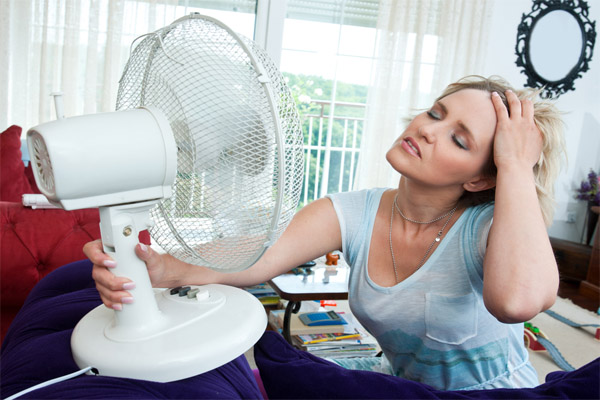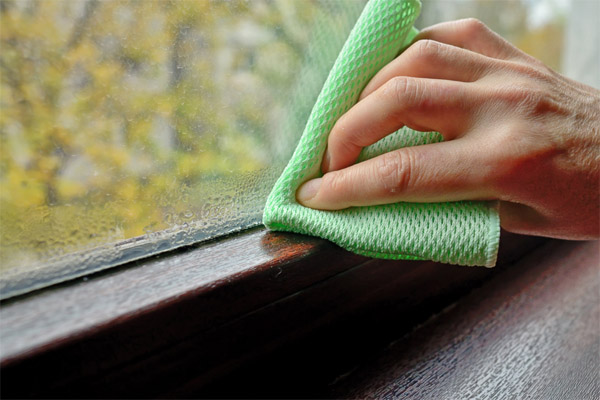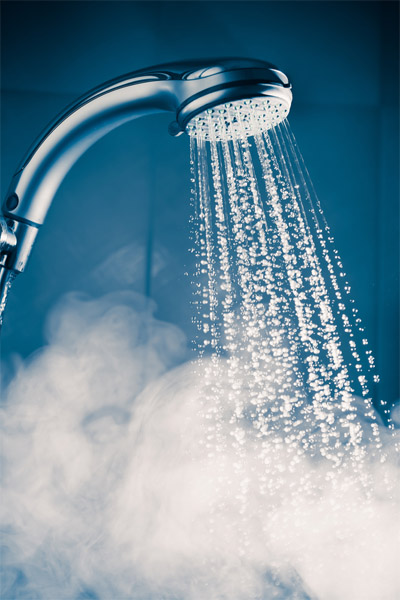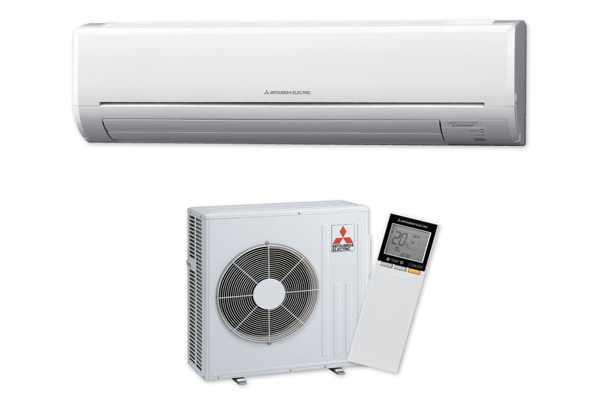Removing Humidity With A Ductless Air Conditioner
 This article will share important information about ductless HVAC systems and solutions. We’ll talk about how these stack up to other HVAC systems and about why they might be the ideal cooling system alternative for your home. We’ll tell you how they create comfortable living environments. This discussion will also include details on the energy efficiency of these systems.
This article will share important information about ductless HVAC systems and solutions. We’ll talk about how these stack up to other HVAC systems and about why they might be the ideal cooling system alternative for your home. We’ll tell you how they create comfortable living environments. This discussion will also include details on the energy efficiency of these systems.
Given that humidity is comfort’s enemy in the summer, one part of this discussion will center on how ductless mini-split systems help manage indoor humidity. You’ll additionally learn about the dangers of having excessively high levels of humidity indoors.
What Are Ductless Air Conditioners?
Contents
A ductless mini-split AC system is unlike any other AC type given that it’s not necessary to have ductwork in place to have treated air delivered throughout the building. Moreover, unlike window AC systems, this equipment isn’t installed in a window where it might block views and make it easier for ill-intentioned parties to access the interior of your home.
Placement & Installation
A ductless system does not require much for installation. Only a very small wall hole is needed to connect the indoor unit with the unit outside. This hole makes it possible for the AC installer to thread the tubing and electrical line for the unit through the wall. The tubing will be used to deliver treated air coming from the outside condenser/compressor to the air-handling unit that’s installed inside. Because there is no need to deal with ductwork at all, the installation process is both easy and fast.
It is possible to install ductless mini-split systems in any area of the home, given their very high level of flexibility. This could be in an area that requires a bit of extra cooling, or in a new addition to the home, rather than having to pay additional money to install new ductwork. Should the need ever arise, these units can even take the place of other cooling equipment.
Applications & Zoning
 With just a single outside mini-split ductless condenser, you can condition multiple rooms. Thus, there’s no need to pay for multiple outdoor units to create or maintain the desired indoor climate. You will, however, need separate air handlers for each zone or room.
With just a single outside mini-split ductless condenser, you can condition multiple rooms. Thus, there’s no need to pay for multiple outdoor units to create or maintain the desired indoor climate. You will, however, need separate air handlers for each zone or room.
Times, when a conventional air conditioning system is not the best option, include workshops or finished attics that do not have built-in ductwork or existing cooling systems. Freestanding structures such as garages can be the perfect application for mini-splits, particularly when attempting to transform these structures into working or living spaces.
Also, as mentioned above, many homeowners prefer to use ductless air conditioning over their central air conditioner. They can cool rooms that are in use rather than cooling an entire home.
Homeowners who have added extensions to their properties know just how costly and challenging it can be to incorporate ductwork into these already major renovation projects. There are times when the addition of one or more rooms makes it necessary to add an additional air conditioning system or to upgrade the size of the current model. The easiest solution in these instances is to add a mini-split system to the new home addition instead.
Issues With Excess Indoor Humidity
 Is there a musty and pervasive odor in your living environment that wasn’t around before? Your windows might be foggy, or you could be drenched in sweat while doing nothing but sitting back. Worse still, you might have mold growth in your bathing or showering area. The most likely culprit in these instances is excess humidity.
Is there a musty and pervasive odor in your living environment that wasn’t around before? Your windows might be foggy, or you could be drenched in sweat while doing nothing but sitting back. Worse still, you might have mold growth in your bathing or showering area. The most likely culprit in these instances is excess humidity.
While having too much moisture in the air that you breathe indoors is both unsightly and uncomfortable, this is a problem that can also be hazardous to your health. Building residents who suffer from respiratory conditions such as COPD or asthma don’t generally breathe well when indoor humidity levels are high. More importantly, bacteria, mildew, and mold can proliferate in high-humidity environments. The spores produced by these organisms can cause further breathing issues and allergic reactions.
Condensation on windows can diminish views, cause the paint on your walls and ceiling to peel, and other forms of damage. When it comes to the health of your family, this is a much more serious issue. Maintaining a living environment that’s both healthy and comfortable is one of the best things that you can do for building residents.
How Humidity Builds Up In The Home
Following are several ways in which humidity can increase in your home:
Showering
 Water vaporizes into your indoor air each time you take a hot shower. The warmer your shower water is, the more vapor that this water will invariably create. You will be able to see this vapor as it condenses and turns into droplets onto the mirror and other cool surfaces. When the bathroom door is opened, this humidity will escape into the remainder of your home. It might manifest as condensation on surfaces such as windows, or on the walls and ceilings, where bacteria growth can occur.
Water vaporizes into your indoor air each time you take a hot shower. The warmer your shower water is, the more vapor that this water will invariably create. You will be able to see this vapor as it condenses and turns into droplets onto the mirror and other cool surfaces. When the bathroom door is opened, this humidity will escape into the remainder of your home. It might manifest as condensation on surfaces such as windows, or on the walls and ceilings, where bacteria growth can occur.
Boiling Water And Cooking
If you have ever watched a kettle or pot of water start to boil, then you know that this very activity can release moisture into the indoor air. You aren’t being asked to stop making tea or noodles for your household. However, it is important to note that much like showering, cooking and boiling water also produce humidity.
Gas Heating
Water vapor is a byproduct of burning gas for heat. If the gas heater in your home vents combustion pollutants outside of the living space via a gas heater, then there is no fear of having these be incorporated into the air you breathe inside. Some gas heating appliances, however, aren’t vented in this way and these heaters will definitely release both water vapor and pollutants into the home that diminish the overall indoor air quality.
Insufficient Ventilation
The ventilation system in your home is designed to remove pollutants and humidity from the inside air. Notwithstanding, if this ventilation system is insufficient for managing this task, buildups of pollutants and humidity will result. Sadly, this can exacerbate allergies and many other respiratory conditions, and it can even make building residents ill.
Certain Locations
If you live along a coastline or in another naturally humid area, your home can easily become overly humid. There is no way to prevent excess humidity outside of the home, but you should certainly make a concerted effort to maintain high levels of indoor air quality within.
How You Can Improve Your Indoor Air Quality With The Right Air Conditioning System
 If you can reduce the level of humidity in your living space, you and all other building residents will have higher levels of both comfort and health.
If you can reduce the level of humidity in your living space, you and all other building residents will have higher levels of both comfort and health.
A lot of people think that the primary role of air conditioning systems in creating indoor comfort is cooling the air around them. Although they help do this, they are also capable of doing far more. These systems remove excess humidity and filter out pollutants also. By eliminating contaminants like bacteria spores and mold, they improve the quality of the air within the home.
HVAC Air Filters
This is something that you can help with by ensuring that the air filters in your AC system are always clean and free of debris. Thoroughly cleaning air filters or replacing them entirely will remove trapped particulates. Clean filters allow air to pass easily through the vents in your home, and this also improves the energy efficiency of the unit.
Air Conditioner Size
You also can improve the levels of efficiency and comfort that your air conditioner provides by choosing the best unit design for your home. Size is an important factor, and when it comes to home cooling systems, you never want to select a unit that’s too large or small for your home’s cooling needs. An under-sized unit won’t have the opportunity to catch up, and it will constantly run, which can lead to unnecessary energy consumption. An oversized unit will have to cycle on and off frequently, which will cause your energy bill to spike.
AC systems that have high SEER ratings have the best ability to promote high indoor air qualities. They can keep air moving through the filters for a more extended period. Also, variable speed operation will better maintain constant temperatures, which additionally prevents excess humidity indoors.
By choosing the right air conditioner model for your house, and ensuring proper AC installation, you can rest assured that this equipment will serve your family well for quite a long time.
How You Can Moderate Indoor Humidity Levels Better With A Ductless System
 There are many ways in which humidity can impact us. In addition to making it difficult for those with lung problems to breathe easily, it also makes it difficult for everyone else to breathe comfortably on days that are muggy and hot. Humidity can make people feel uncomfortable and sticky – we stick to our chairs, and we have a much harder time cooling down, even when the AC is blasting.
There are many ways in which humidity can impact us. In addition to making it difficult for those with lung problems to breathe easily, it also makes it difficult for everyone else to breathe comfortably on days that are muggy and hot. Humidity can make people feel uncomfortable and sticky – we stick to our chairs, and we have a much harder time cooling down, even when the AC is blasting.
By eliminating excess humidity from your home, you can increase your comfort levels even when the temperature is noticeably higher. You will be able to save energy as well, given that it will take less to keep you cool and help you save cash. Possibly the most exciting news is that less moisture will make it more difficult for bacteria and mold to thrive. Those with allergies and other respiratory ailments to contend with can enjoy higher levels of health and comfort.
Dry Mode
In comparison to traditional AC systems, ductless mini-split designs are highly effective at removing and moderating humidity within the living space, and they operate very efficiently. They extract excess moisture and cool the indoor air in a way that is far more flexible than other systems. These units even have a “dry mode” that functions separately from the basic cooling mode. This is not an option that other cooling systems provide.
Cool air is produced by ductless cooling systems when warm air is passed over refrigerant-coolant-filled coils. This coolant absorbs the warmth from the air to lower its temperature significantly. Cooler air holds less moisture than warm air. This is something that can be easily seen in the winter months as the air becomes drier. As the air cools, the moisture that passes over the coil condenses. It is then drained out of the system before it can be reintroduced into the living environment.
As stated above, mini-split systems also have the option of “dry mode” functioning. When in this mode, the fans move at a significantly slower speed. This way, the air remains on the coil for a longer period. The more time that this air spends on the coil, the more moisture that gets eliminated. While this setting does cool the inside environment down, it isn’t going to freeze residents out, which often happens when the thermostats for conventional AC system designs are set lower to eliminate additional moisture.
Check Out One Of Our Ductless Installation Projects
Call R.F. Ohl For All Your Home Comfort Needs
To get reliable and high-quality HVAC solutions from a trusted HVAC service company, contact R.F. Ohl now. We provide honest prices on truly expert HVAC solutions. If you have an interest in installing a mini-split ductless HVAC system in your home, call us now. We have a team of NATE-certified technicians with the training and knowledge for locating the ideal ductless setup for your property.
There are many home comfort services that we currently supply, including furnace repairs, HVAC system tune-ups, and much, much more. Better yet, every one of your HVAC experts is polite and friendly.
We’re committed to making sure visits with us are always pleasant. Get your free consultation today. Contact R.F. Ohl right away!
Click here to contact us today or give us a call at (610) 377-1098 if you have any questions.
